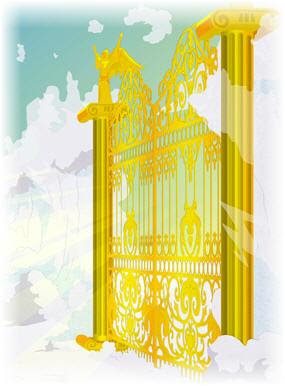
History is rife with fashion disasters. If you had to pick a single decade where dress sense did a complete Titanic, though, it has to be the 1960s. Taking their sense of freedom to embarrassing extremes, fashion designers all over the world struck out in all kinds of ludicrous directions, proving in their enthusiasm for the unique that they proved themselves the bastions of absurdity.
One of the biggest themes designers seized on during the ‘60s was sex. It was everywhere, thanks to the revolution, so why not bring it into the world of fashion? True, fashion designers had always thought of themselves as the cutting edge of sensual allure, but here was a chance to really pull out the stops. Alas, there are some stops that simply shouldn’t be pulled.
Fashion radicals in the ‘60’s took two directions: less and more. Less being less clothing and added skin, and more being … well, call it more options – the designers’ way of blurring gender roles.
One of the highlights of the ‘less’ movement was the topless bathing suit. Agreed, it was developed and released in 1964 by Rudy Gernreich as a publicity stunt to get his name in the papers, it was still a perfect example of how fashion designers were pushing the design – and taste – envelope. Nothing more than a pair of bikini briefs with a pair of thin straps coming between the breasts – leaving them bare -- and down the back, the, Gernreich’s creation received an interesting of mix of horror and scorn. The horror came from the likes of Vatican, who proclaimed the suit “desperate and senseless adventure of impudent shamelessness”, and even the Soviet Union, who called it “back to barbarism” – of course the Vatican also said that Rock ‘n Roll was the devil’s soundtrack and Khrushchev was publicly outraged when he watched the filming of the Shirley MacLaine movie Can-Can, so at least the suit was in very good company. The worst criticism came from those in the fashion know, who pointed out that all one had to do to have a topless bathing suit was to buy a bikini and leave half at home – and literally half the cost of the $24 suit. The suit really only caused a stir here in the puritanical US (“The police are apprehensive of what these suits will reveal. I’m apprehensive they’ll reveal nothing,” said Mort Sahl), as European women, of course, had been bathing topless for decades.
Additionally banking on the expansive of bare flesh that seemed to be one of the defining factors of the decade – and perhaps spawned by the publicity around Gernreich’s suit -- the famous fashion designer Kenneth (and you know they have to be famous if they only have one name) announced in ’69 a whole line of makeup products for the bare bosom. With such descriptions as “tip blush,” and “cleavage delineator” you can imagine how fast these products flew off the shelves – and into the private collections of transvestites.
As part of the ‘more’ school of design, there were many experiments in gender experimentation in the 60s – including the failed attempt to try and raise interest in skirts for men. As reported in Paul Kirchner’s wonderful book, Forgotten Fads and Fabulous Flops, Seventeen magazine put boys in kilts in a spread, and even Time was hooked by this supposed next fad with a report that the garment industry had big plans to import the concept of the male skirt. Alas, no amount of publicity and wishful thinking in the mind of fashion designers could change the mind of the American male.
One of the best examples of fashion insanity owes a lot to the gender play experimentation of the ‘60s -- as a radical reaction against it. Eldridge Cleaver is known for many things: Black Panther Minister of Information; author of Soul on Ice; misogynist; jailed in connection with a shoot-out with the Oakland Police, ex-patriot living in Cuba, Algeria, and Paris; and -- ready for this? -- failed fashion designer.

Eldridge had this problem, you see, with the current state of men’s fashion. He felt that men should be able to enjoy all the stylish and comfortable pants being offered for women. Why should they get all the fun?
But Eldridge couldn’t just wear the new women’s slacks -- after all, there was this little problem he had about sexual identity (and he had a lot of issues with sexuality, just read Soul on Ice). So what to do about this garment dilemma? His answer was to create a whole new line of clothing, slacks with all the style and comfort of women’s pants without sacrificing his pathologically all-important machismo: Cleavers, the pants with an “appurtenance.”
Cleaver probably threw a lot of bombs during his Black Panther revolutionary days, but nothing compared to his Cleavers. While the pants component received some praise, it was that all-important “extra” feature that most people had issues with. After all, it was one thing to go through the supposed embarrassment of wearing ‘women’s’ pants, but quite another to wear them equipped with a very present, rather exaggerated 20th century version of a external jockstrap.
Luckily Cleaver’s vanished even quicker than cleavage makeup and the topless bathing suit, joining the ranks of Nehru jackets and bell-bottoms -- exiled to the deep, dark corners of fashion history. If we are lucky, their mistakes will never surface again -- but looking at the general history of garment insanity it’s more than like just a matter of time.













